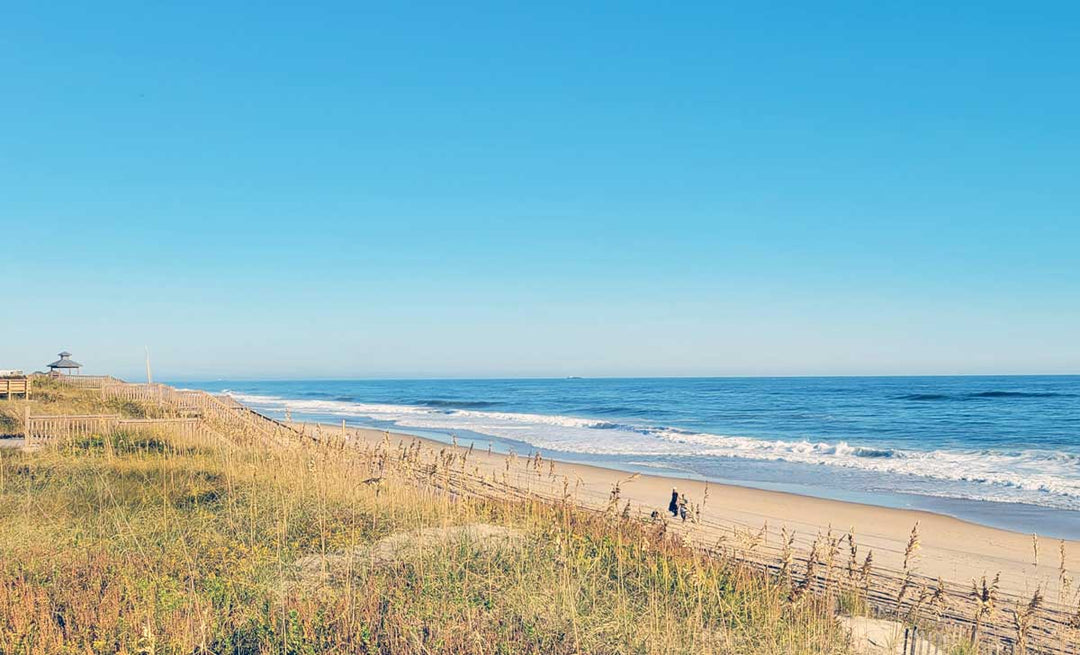18 Facts About Cape Hatteras Lighthouse


1) To preserve Cape Hatteras Lighthouse and prevent the brick structure from soon falling into the ocean, the lighthouse was moved about 1,500 feet inland in 1999. This project took engineers just 23 days to complete, an impressive feat indeed!
2) Before being relocated, Cape Hatteras Lighthouse was just 50 feet from the shoreline in 1980.
3) Every so often, the black and white strips on the exterior of Cape Hatteras Lighthouse. It will come as no surprise that it takes a lot of paint to cover the beacon - in fact, some 140 to 150 gallons of paint is utilized by skilled painters.
4) One of the reasons Cape Hatteras Lighthouse is so well-known is that it is the tallest brick lighthouse in the United States and the second tallest in the world. You read that right, the world as a whole. Pretty amazing!
5) To build a typical 1,200 square foot home, you'll need to use about 8,100 bricks. Construction of Cape Hatteras Lighthouse required purchasing and placing some 1,250,000 bricks. A firm out of Baltimore, MD, was awarded the contract to supply all red bricks. Wonder if the individual who won the business received a bonus?
6) The National Park Service welcomes approximately 200,000 visitors each year who stop by the lighthouse to snap a photo for Instagram, peruse the gift shop and climb to the top of the landmark.
7) Many of the National Park Service staff you'll encounter at the lighthouse are seasonal employees who have to hop from one NPS job to the next to stay employed; often, the next assignment the individual can secure is out of state. No question, summer is when the lighthouse is the most well-staffed.
8) You are probably already aware that Cape Hatteras is not the only lighthouse on North Carolina's Outer Banks. Cape Hatteras is 43 miles south (58 minutes) from Bodie Island Lighthouse; 53 miles south (1 hour 10 minutes) from Roanoke Marshes Lighthouse; 84 miles (2 hours 4 minutes) south of Currituck Beach Lighthouse and 36 miles (1 hour and 45 minutes) north of Ocracoke Island Lighthouse - you must utilize a ferry to access Ocracoke Island.
9) Many of the National Park Service rangers who operate and maintain the lighthouse are seasonal employees who are not local to the area and stay on the Outer Banks until their position expires. Other NPS-managed attractions on the coast of North Carolina include Bodie Island Lighthouse, Fort Raleigh National Historic Site, and the Wright Brothers National Memorial.
10) If your kids want to enjoy the view at the top of the lighthouse, they must be able to climb on their own accord. Each lighthouse climber must be at least 42 inches (3 feet and 6 inches) tall and capable of climbing all of the steps independently without requiring an adult to carry them.
11) At the top of the lighthouse is a first-order Fresnel lens that operates nightly. Although the National Park Service maintains the lighthouse, the US Coast Guard keeps the structure's beacon in working order. A light beam from Cape Hatteras can be spotted 24 nautical miles away. In case you don't know already, a nautical mile is 6,080 feet (a regular mile is 5,280 feet).
12) The current lighthouse is not the original. The beacon at the first lighthouse was first operational in October of 1803. The current Cape Hatteras Lighthouse was completed in 1870, and the original tower was demolished in 1871.
13) The original Cape Hatteras Lighthouse wasn't nearly as tall as the current structure. However, it was so short that the lighthouse was heightened in 1835 and again in 1838 and 1840!
14) Parking at the lighthouse is free and plentiful. Whether you have a car, truck, motorcycle, bus, camper, or all of the above, you should have no difficulty finding a place to stop and leisurely visit the landmark.
15) Cape Hatteras Lighthouse didn't receive its well-known black and white stripe pattern until the year 1873. Beforehand, the lighthouse's exterior was red and looked similar to what you'll see today when visiting Currituck Beach Lighthouse.
16) Confederate troops attempted to destroy the lighthouse during our country's Civil War but thankfully unsuccessfully because of Union forces. However, southern troops did successfully take the structure's Fresnel lens with them.
17) Not including the foundation, Cape Hatteras Lighthouse weighs approximately 4,830 tons, equivalent to about 1,200 elephants.
18) To reach the top and enjoy breathtaking views of Cape Hatteras National Seashore, you must hike your way up 257 stairs to reach the top of the lighthouse.
Enjoyed this post? Be sure to visit the articles below to learn more about the various lighthouses of the Outer Banks!






Ummm…#16 Why would confederate troops attempt to destroy the lighthouse in their own territory? The “retreating Confederate soldiers took the Fresnel lamp from the lighthouse, to keep it out of Union hands.” https://www.outerbanks.org/listing/cape-hatteras-lighthouse
Cool 😎 website
Leave a comment